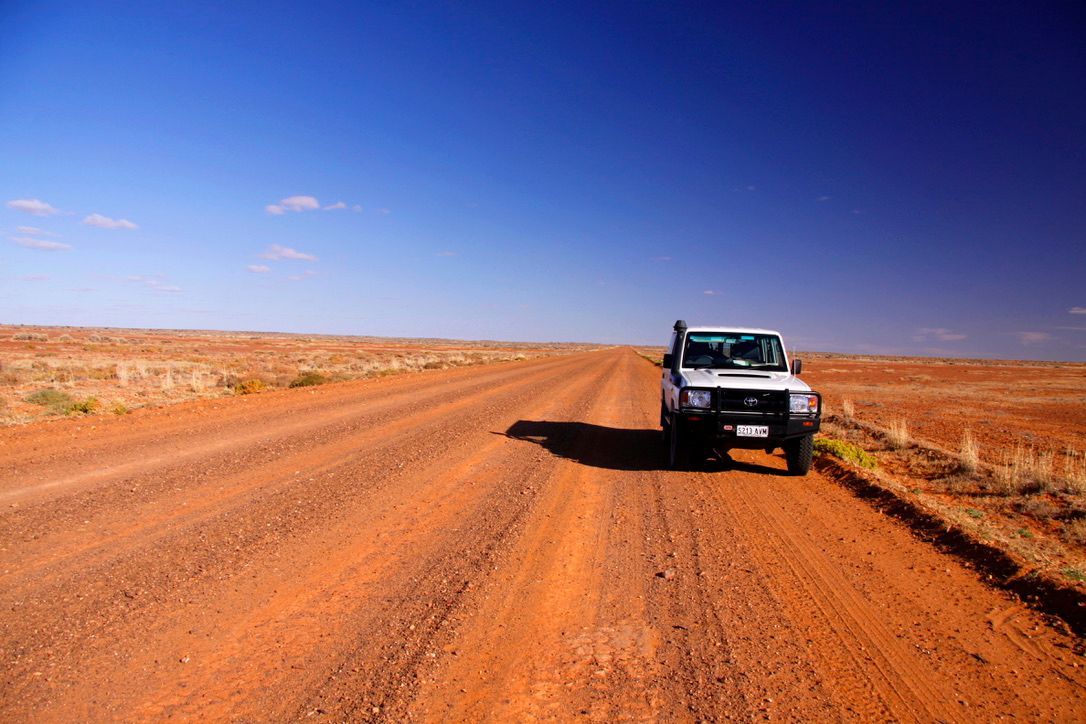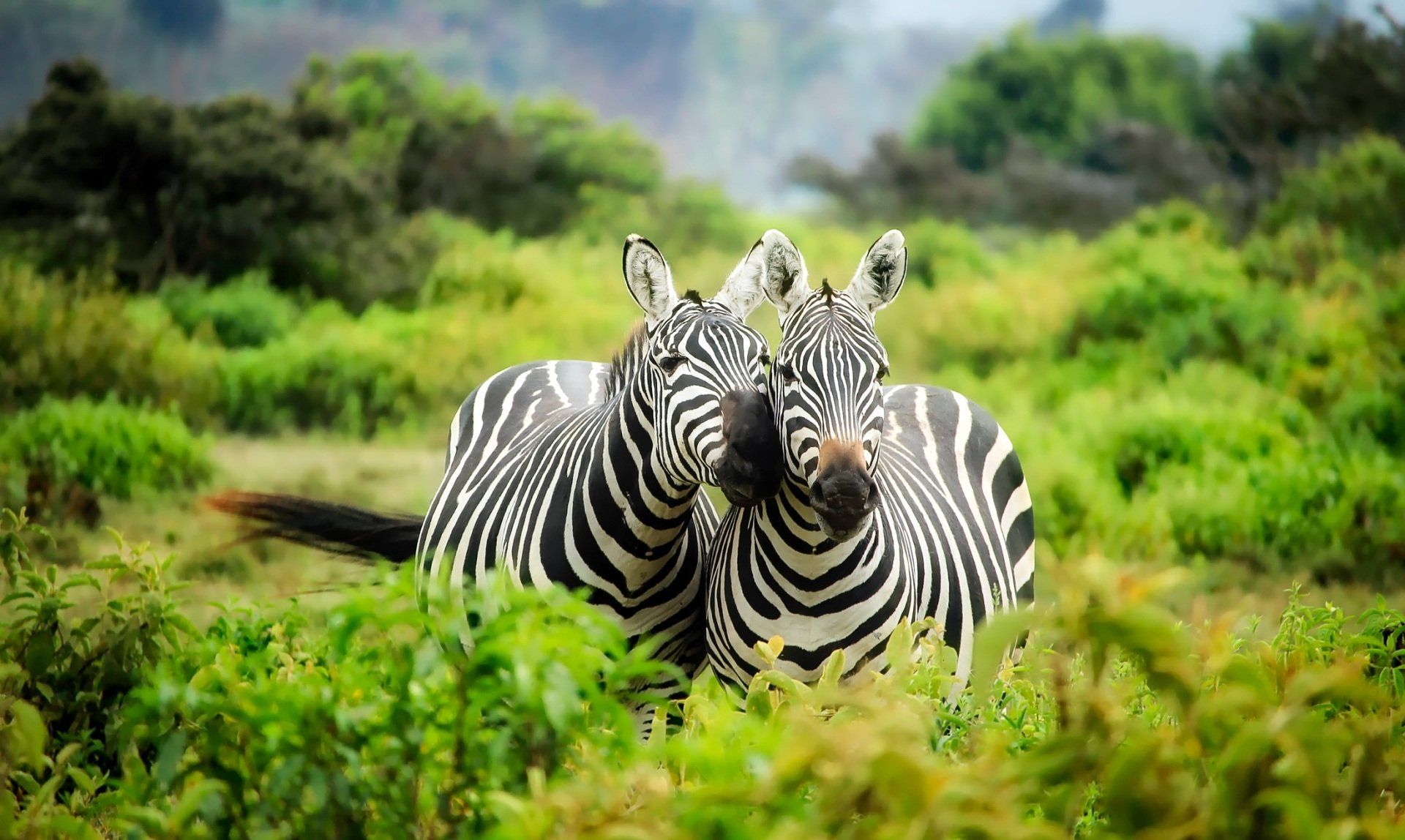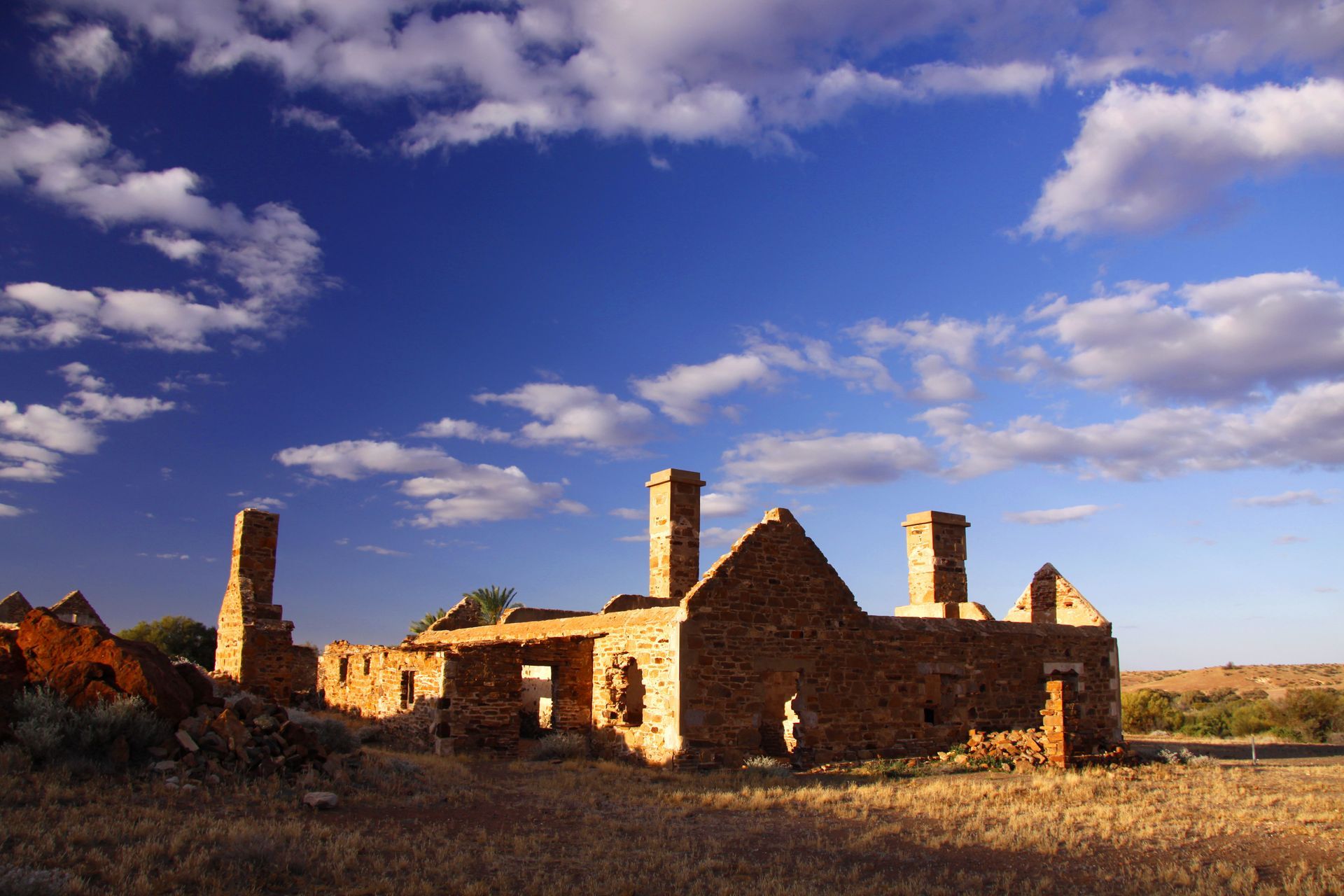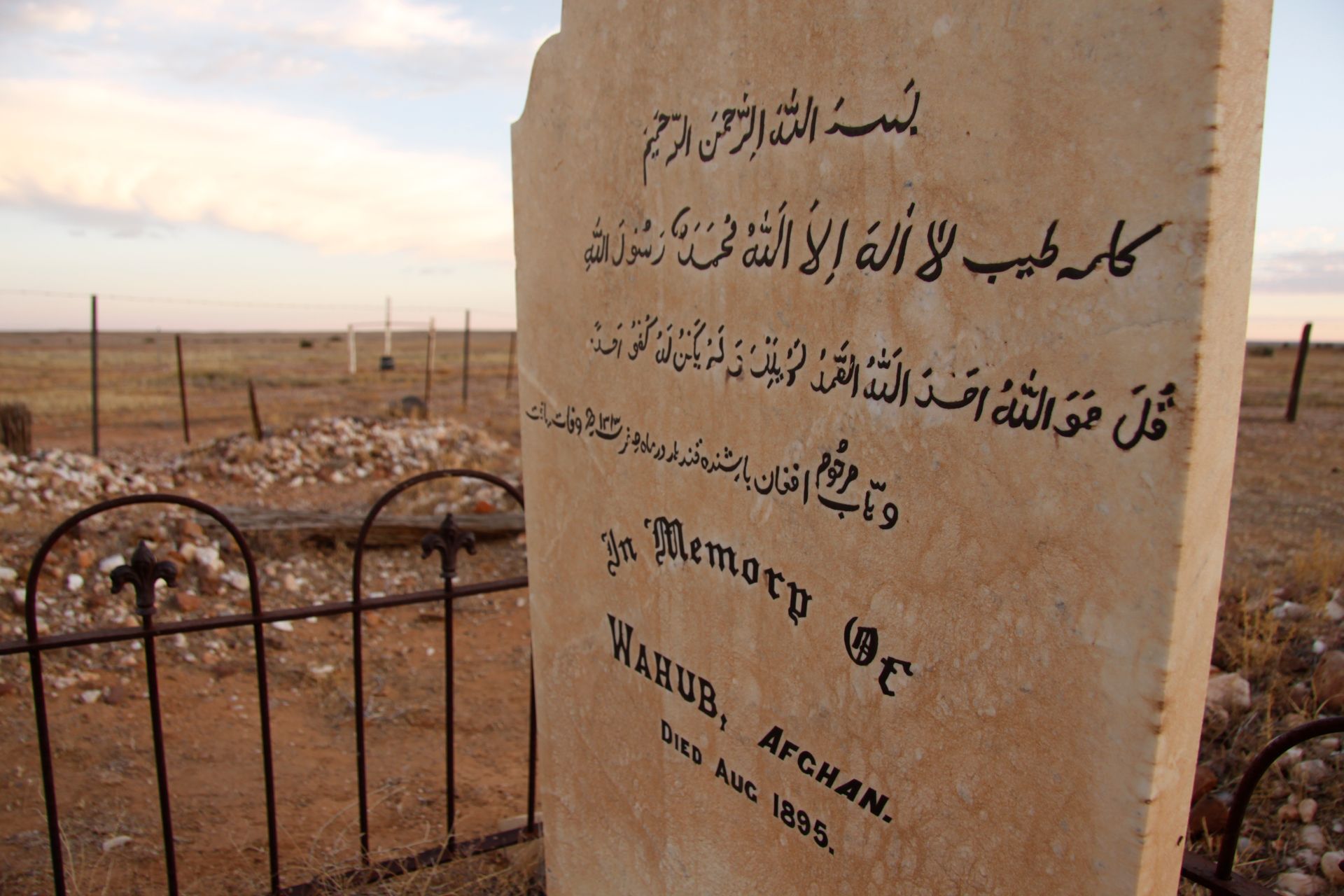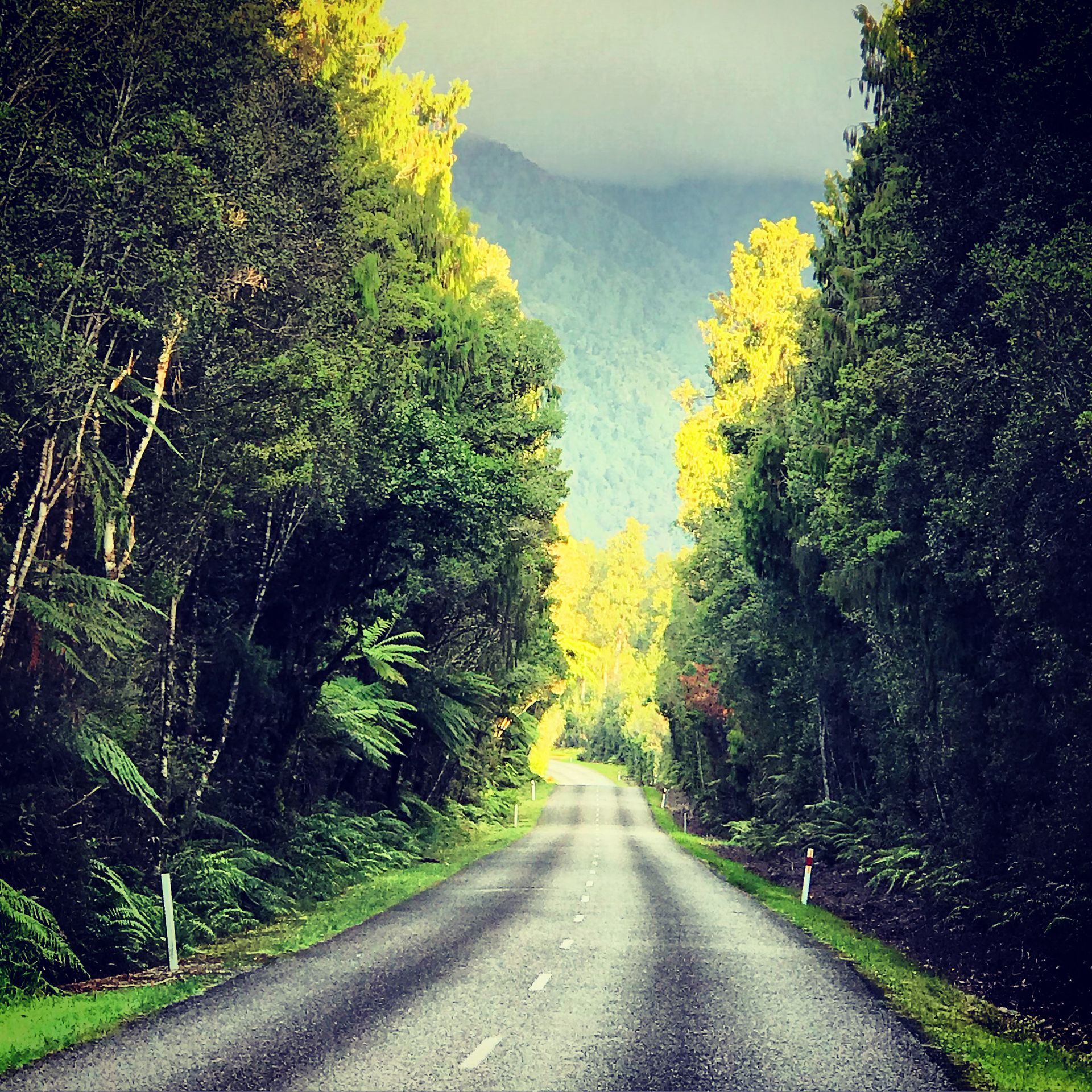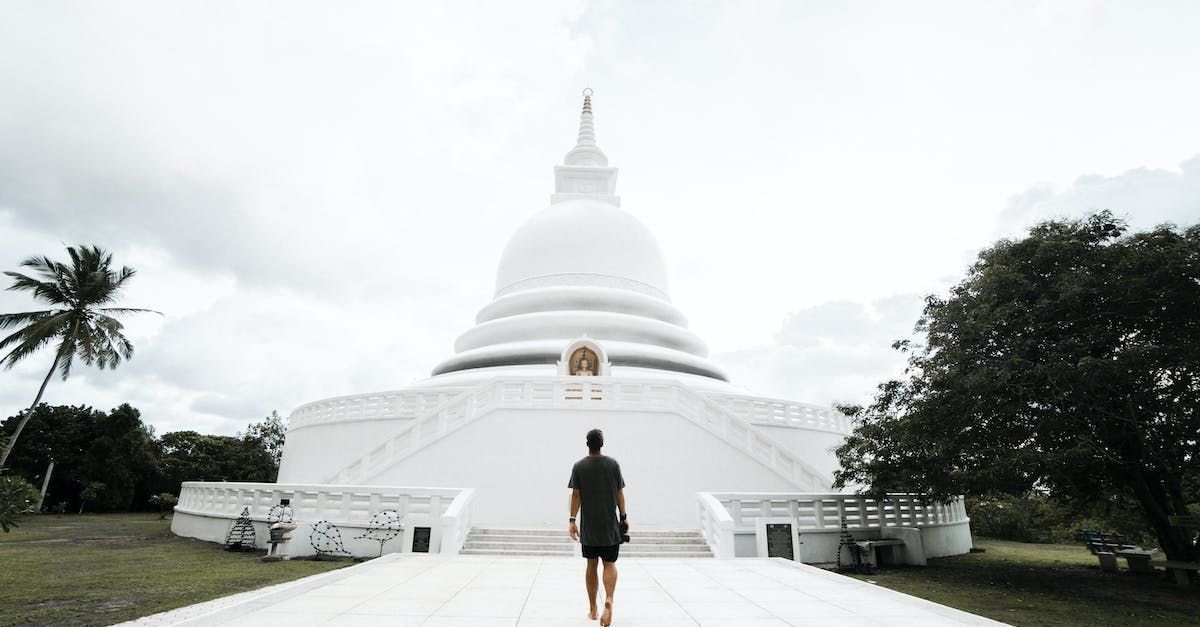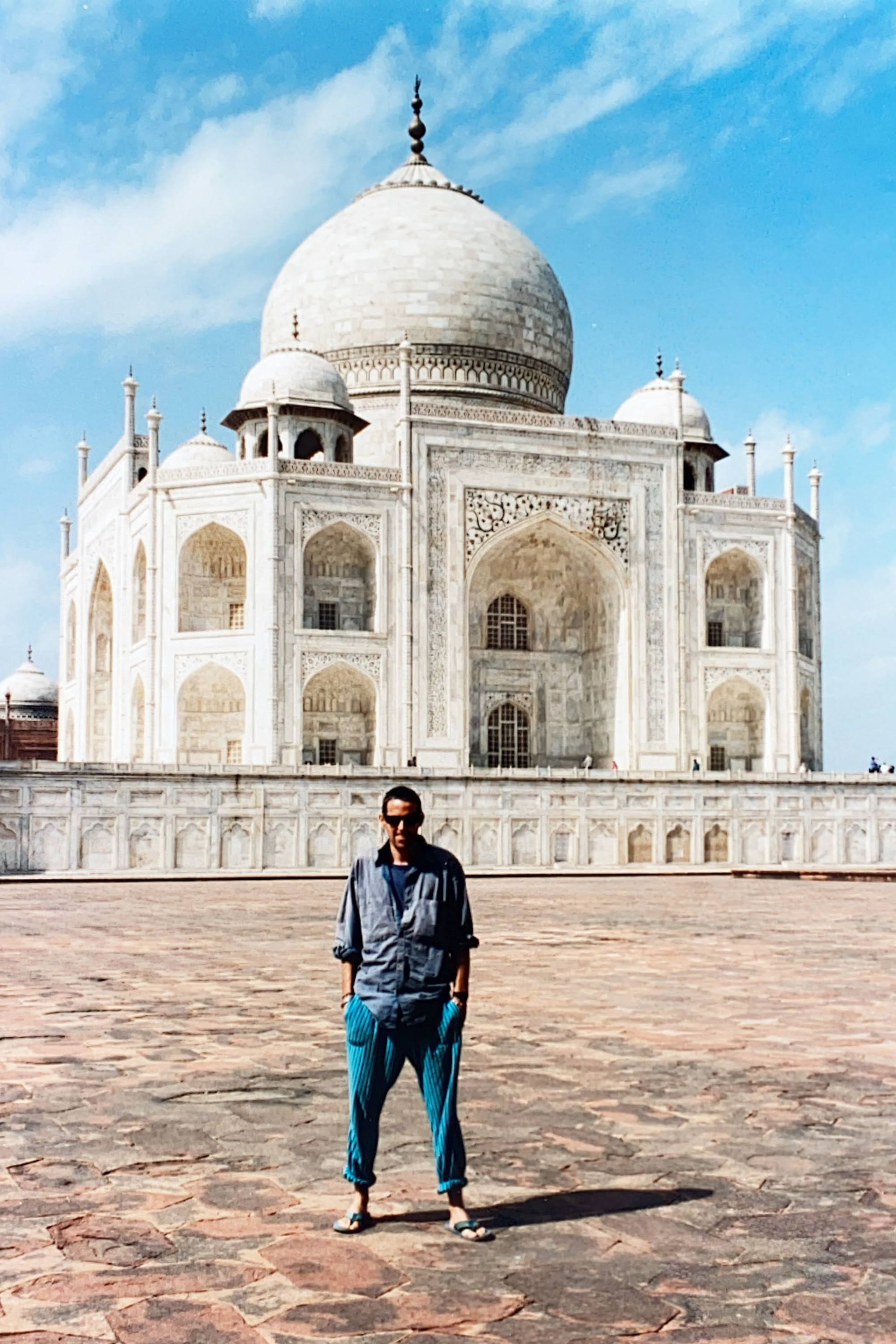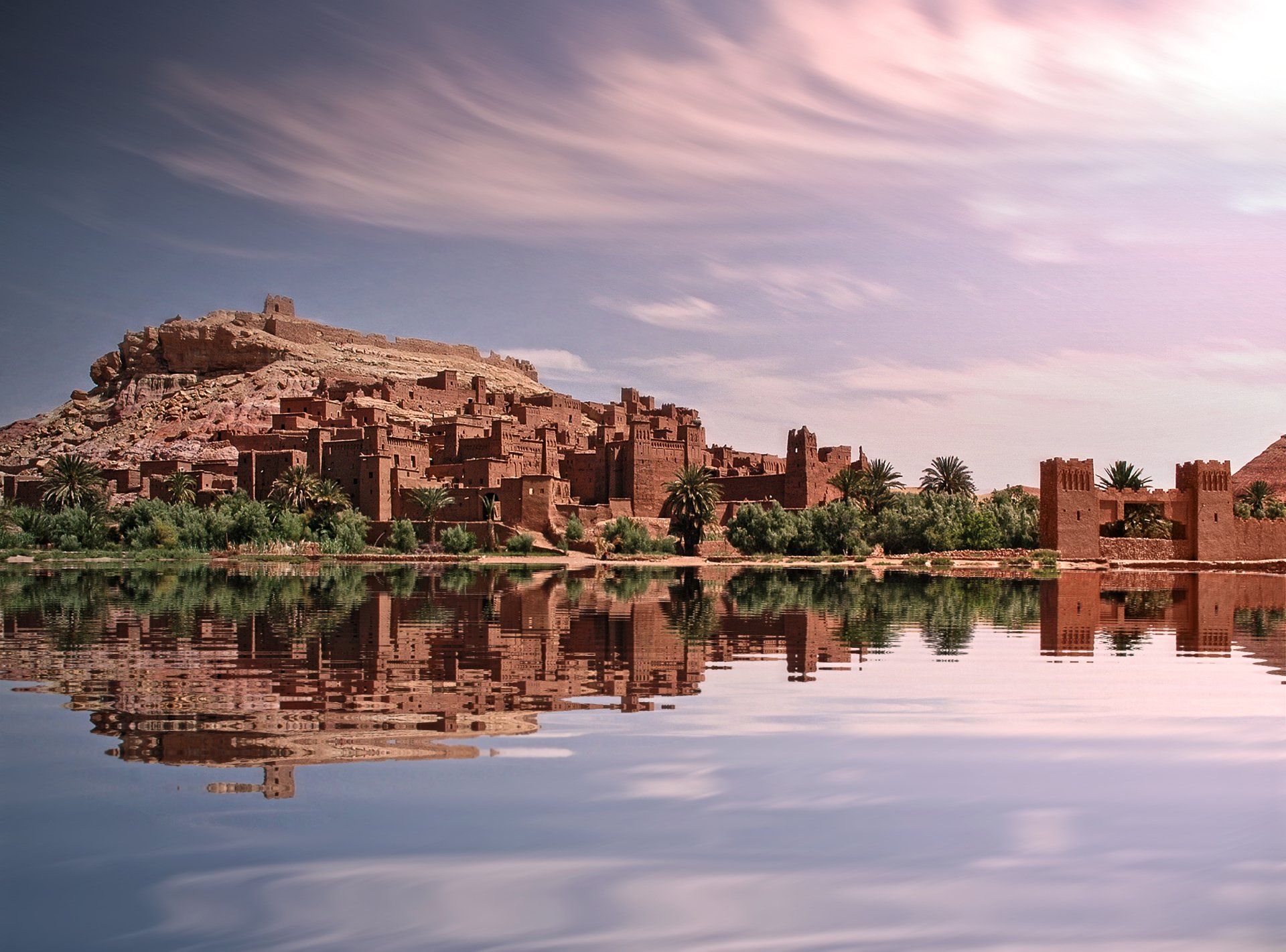It’s time to haul the anchor up, And leave the land astern…
–
Al Stewart, Lord Grenville
At Marree, the sky is on fire. Stretched across the western horizon, a bank of cloud glows molten red, shot through with stripes of yellow and mauve. The town’s only street gleams like a strip of burnished copper. Across in the abandoned railway yard, sway-backed buildings of timber and tin cast long shadows along the empty platform.
I sit with a group of locals on the uneven pavement outside the Marree Hotel. Everyone is drinking beer. A collection of dusty 4WDs, including mine, are angle-parked on the street. The talk is mainly about the weather – it is unusually cold for August – and the condition of the Oodnadatta Track: the only road north. I think of the old proverb “red sky at night, sailor’s delight.” A red sky is also a traveller’s delight.
The Oodnadatta Track runs from Marree, in central South Australia, to the settlement of Oodnadatta, four hundred kilometres further north on the edge of the Simpson Desert. The track follows a course roughly parallel to the route taken by the old Central Australian Railway.
Nicknamed “the Ghan” (short for Afghan, a reference to the Afghan cameleers who pioneered transport routes into Australia’s inland), the Central Australian Railway operated for more than a century. The last train passed down the line in 1980. A new railway had been built further west. The Ghan was no longer needed. The tracks were torn up. The stations, sidings, bridges and water towers were left to sink back into the desert.
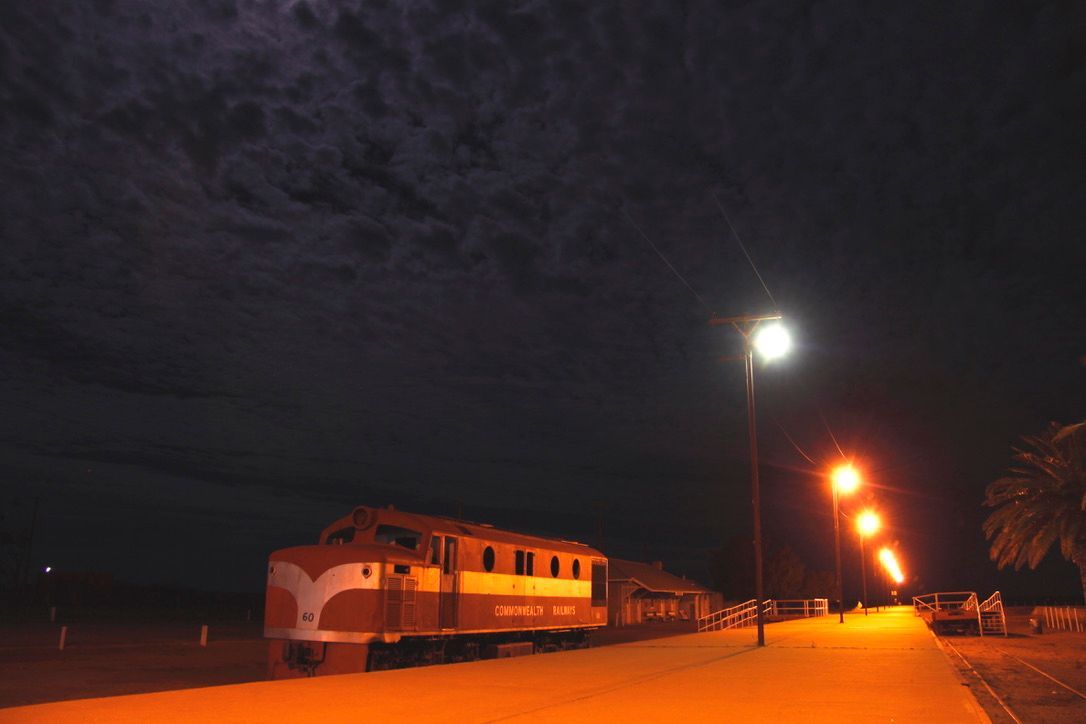
The light drains rapidly from the sky as it always does in the Outback. One by one the stars come out. The windows of the pub radiate warm pools of light out onto the darkened street. I finish my beer and walk up to the edge of town. The tarmac ends abruptly in red dirt. In the darkness, I can sense the vastness of the Outback beyond: a darkened ocean, boundless and bare. And tomorrow I will cast off and begin my voyage.
At dawn, I am sitting among the graves of Afghan cameleers. In the early days of Australia’s settlement, camels were the only way to transport supplies to the lonely stations and isolated communities of Central Australia. Marree was the last outpost of civilization before the emptiness of the desert, and the Afghans with their camels were perfectly suited to the job of conveying goods north.
The graves lie east to west, facing Mecca. Each is marked by a timber post, split and weathered by decades of baking sun. Only one grave, that of a man named Wahub, is marked by a traditional headstone. The Arabic script looks incongruous amid the traditional Christian monuments. The sun clears the horizon and floods the landscape with light.
Back in Marree, I have a Continental Breakfast at the pub. It seems like a fitting name for my last meal before I cast off the moorings of civilization and set sail out into the centre of the driest continent on Earth. I fill my truck with diesel and buy a cold drink at the local garage then head north into the desert.
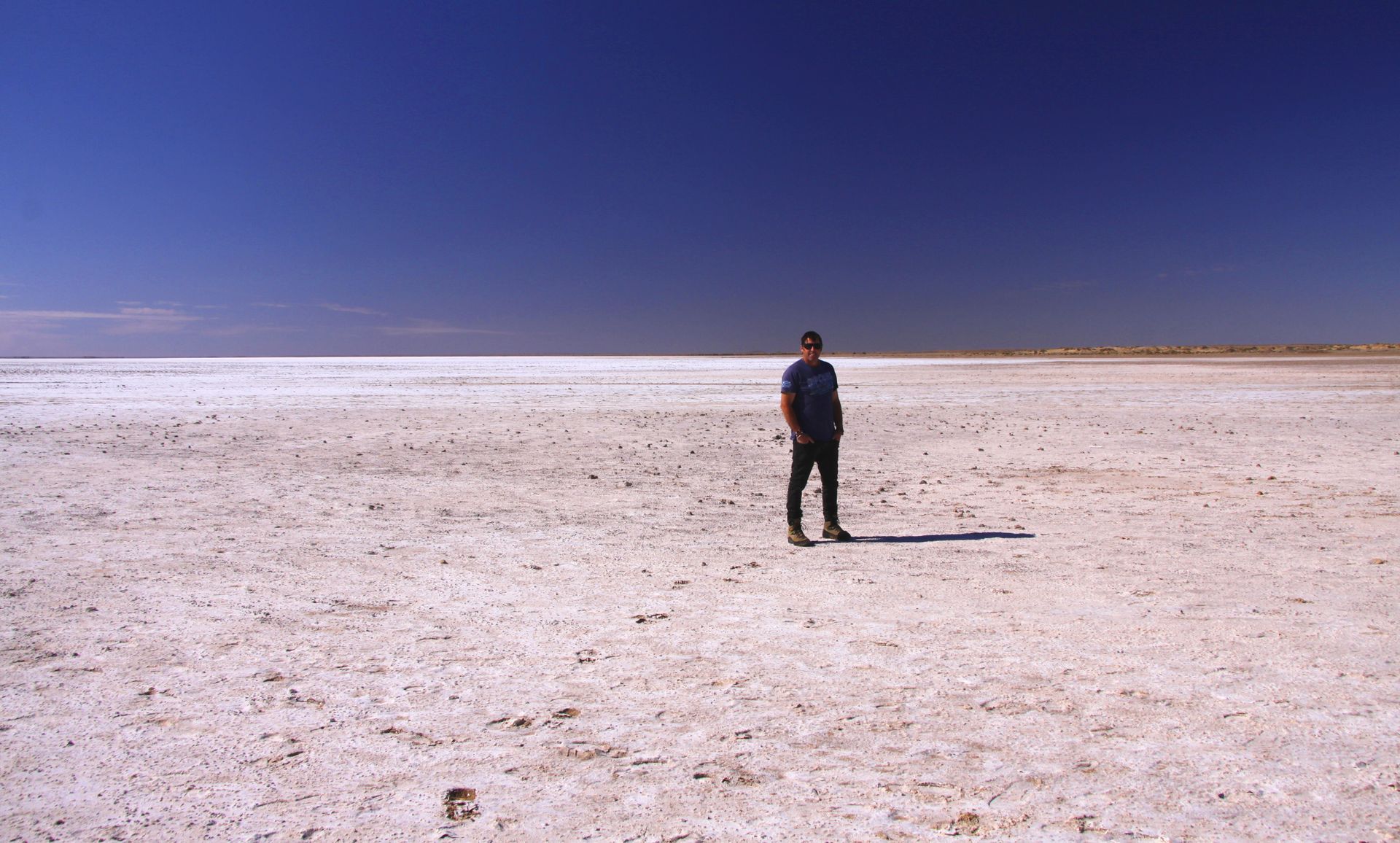
A hundred kilometres from Marree, on the edge of Lake Eyre, I walk out into a white limbo of salt. The hot air is heavy with the briny scent of sodium chloride. The thin, crystalline crust crunches underfoot. Fed by a catchment comprising one-sixth of Australia’s area, Lake Eyre occasionally fills with water. But mostly it is dry: a bleached landscape of blue and white, like an overexposed photo negative. I set my camera on a tripod and take a selfie. The light is so harsh I am just a shadow in the resulting image.
Yet this desiccated landscape is not without water. Deep beneath the ground, in the rifts and synclines of sandstone which form the foundations of Australia, the Great Artesian Basin contains sixty-five thousand cubic kilometres of water. In places, the water seeps from the ground into mound springs, tiny conical hills formed by deposits of minerals contained in the water. A few kilometres beyond Lake Eyre, I sit alone by one called The Bubbler. Encircled by a hem of reeds and algae, the water is cool and slightly brackish. It is amazing to think that the water quietly bubbling up here fell as rain two million years ago in far away Queensland.
I camp for the night on a spit of red sand beside a waterhole on the Warriner River. The girders of a Ghan railway bridge, balanced on thin steel struts, span the river just downstream. Thousands of wading birds screech and titter on the water.
My campfire crackles and snaps as I cook steak, onions and tinned peas for tea. I am struck by the thought that the heat and light produced by the burning wood fell as sunlight on the Outback decades – possibly centuries – ago. In a strange, tenuous way, it connects me with the days when the Ghan trains rattled over the old bridge which now stands silhouetted by the rising moon.
Driving the Oodnadatta Track gives me the feeling that I am sailing alone on a vast red ocean. My course is laid out for me every day as the road unfolds ahead of me and closes into a vanishing point exactly the same distance behind. The sun rises in the same position on my starboard beam every morning, describes a great arc overhead as the day progresses, and sinks back into the landscape off to port as I anchor for the night. The giant orb of the full moon follows the same track. It is as if both are connected by some invisible bar, pivoting on perfectly balanced gimbals, with me in the centre.
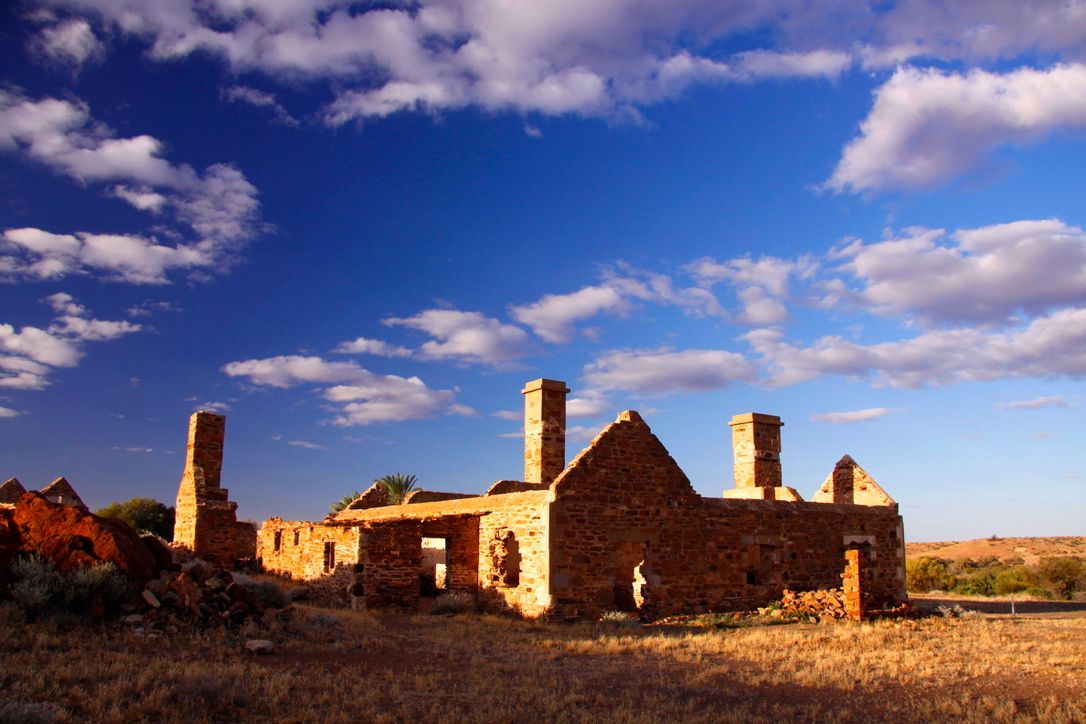
The ruins of the Old Peake Homestead overlook Freeling Springs, twenty kilometres off the Oodnadatta Track. The roofless stone buildings once housed a repeater station on the Overland Telegraph Line. Morse code signals coming to or from Adelaide were amplified here and then sent onwards. In its day, the OTL was cutting-edge technology; communications between Britain and Australia which had once taken months now only took a few hours. I hold up my smartphone and photograph it with a pair of telegraph poles behind. The telegraph line is long gone; cell phone coverage is a distant memory. No one knows I am out here. I am incommunicado.
After days alone in the wilderness, Oodnadatta, the “driest town in the driest state of the driest continent”, feels like a bustling urban environment. At the Pink Roadhouse, I indulge in the sybaritic pleasure of a hot shower and numerous cold drinks. But I soon begin to feel a strange desire to haul the anchor up and drift further north, deeper into the continent. I refuel and drive to the edge of town where the tarmac crumbles into red dirt again. The road converges to a point on the horizon…and vanishes.
